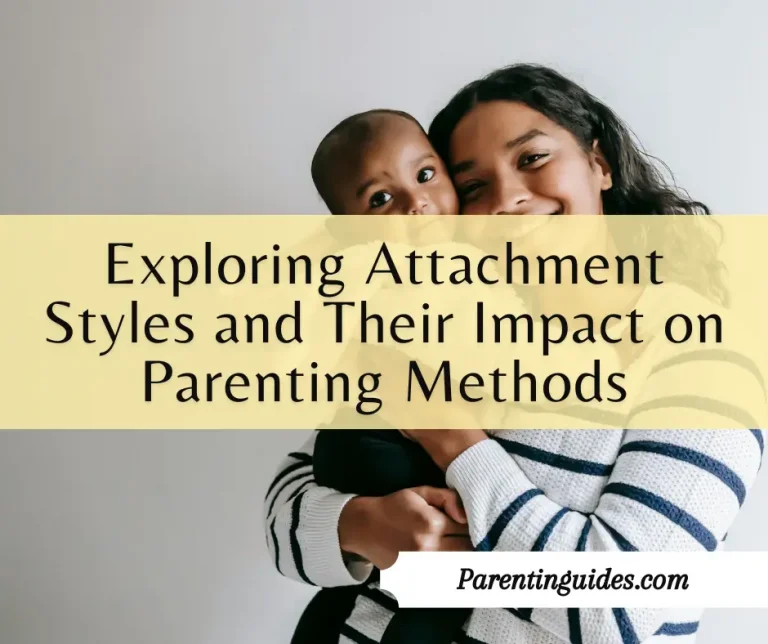Communication is a cornerstone of child development, shaping their ability to express emotions, engage with peers, and navigate the world. As a parent, I’ve seen firsthand the transformative power of fostering good communication skills from a young age. My husband and I have always prioritized creating an environment where our children feel heard and empowered to speak their minds. This article will delve into practical strategies that have worked for us and many others in enhancing communication in children.
One morning, as we prepared for the day, our youngest seemed unusually quiet. Normally bustling with stories from school, her silence was a stark contrast. This prompted a gentle conversation where we encouraged her to share her feelings. It turned out she had been bullied at school and felt scared to speak up. This incident reinforced our commitment to strengthen her communication skills, ensuring she could advocate for herself confidently.
In this article, I will share insights and strategies for enhancing communication in children. I will also talk about building a strong communication foundation, developing listening skills, and more. Whether it’s through daily conversations at the dinner table or structured activities to boost expressive skills, the approaches we’ll explore are aimed at making communication a strength in your child’s developmental arsenal. With these strategies, you can help your child articulate thoughts clearly and listen with empathy, setting them up for lifelong success.
Stay tuned as we navigate these methods, enriched with our personal experiences and backed by expert advice. From creating a supportive home environment to using technology wisely, each section is crafted to equip you with tools to enhance communication in children. By the end of this read, you’ll have a clearer pathway to nurturing a confident communicator at home.

Building a Foundation for Communication for Children
Creating a Supportive Environment
In our home, creating a supportive environment has been crucial for enhancing communication in children. From early on, my husband and I made it a point to cultivate a space where our children felt safe expressing their thoughts and emotions. We often remind them that our home is a safe zone where they can talk about anything, be it their school day or a new hobby. This open atmosphere encourages our children to communicate more freely and confidently. Every positive response they receive builds their trust and comfort in sharing more. It’s about showing genuine interest in their lives and reinforcing that their voices are valued.
Role Modeling
Role modeling and effective communication are significant in how children learn to interact with others. My husband and I always strive to demonstrate healthy communication practices. It is whether we’re discussing our day, resolving a disagreement, or planning family activities. We make sure our conversations are respectful and clear. Seeing us engage in constructive dialogues teaches our children valuable communication skills they mimic in their interactions. It’s rewarding to hear them use “please,” “thank you,” or “I understand,” mirroring the language they hear at home. We believe that these are very important for enhancing communication in children.
Consistent Engagement
Regular, meaningful engagement is essential for enhancing communication in children. Every evening, our family enjoys what we call “dinner table talks” where everyone shares something about their day. This routine not only helps us stay connected but also allows our children to practice their communication skills daily. My husband often asks open-ended questions to encourage the kids to elaborate on their thoughts, which helps in developing their ability to express themselves more clearly and in detail. These consistent interactions are key to building their confidence and competence in communication.
By focusing on these foundational aspects, we’ve seen noticeable improvements in how our children express themselves and interact with others. It’s through these daily practices that we continue to enhance communication in our children, setting them up for success in all areas of life.

Developing Listening Skills
Active Listening Techniques
Teaching our children to listen actively is a cornerstone in enhancing communication in children. My husband and I use simple yet effective techniques that have greatly helped our kids become better listeners. We started with ‘echoing’ exercises, where one person says a statement, and the other repeats it back to ensure they’ve understood correctly. This not only improves their listening but also teaches them the importance of clarification. Another method we frequently use in enhancing communication in children is ‘listening with eyes’. Simply, it is encouraging our children to maintain eye contact, which signals to the speaker that they are paying attention. These active listening skills have been vital in helping our children engage more thoughtfully in conversations.
Games and Activities
Games are a fun way to enhance listening skills in children. We often play games like ‘Simon Says’ or ‘Story Chain’ where each player adds to a story, and everyone must listen carefully to continue the thread accurately. These games make listening a fun challenge rather than a chore. Another activity we enjoy is ‘Listening Walks’ where we go outside, and the children close their eyes and identify sounds around them. This not only sharpens their auditory skills but also makes them more aware of their environment. These activities are not just entertaining but are instrumental in fostering better listening habits.
Listening Challenges
Every family faces challenges, and improving listening has been one of ours. Sometimes, our kids would seem like they were listening but later reveal they didn’t grasp the details. To address this, we began implementing reflective listening in our routine. After discussions or when giving instructions, we ask our children to repeat what they understood. This practice has helped us identify gaps in their listening and provide immediate feedback. Sharing these challenges and solutions openly has not only improved our children’s listening skills but also taught them that it’s okay to make mistakes and learn from them.
Incorporating these techniques and activities into our daily lives has been key to enhancing communication in our children. Each strategy, enriched with personal experiences and tailored to be engaging, aims to develop strong listeners who are attentive and responsive.

Enhancing Verbal Expressions
Expanding Vocabulary
One of the most effective strategies for enhancing communication in children is expanding their vocabulary through daily conversations. My husband and I make it a point to introduce new words during our interactions. Whether it’s describing the texture of a new food or discussing the plot of a book, we use varied and rich language. This approach naturally broadens their vocabulary. We also play word games like “Word of the Day,” where each family member introduces a new word and explains its meaning. This not only makes learning fun but also encourages our children to use these new words in their conversations.
Encouraging Descriptive Speaking
Encouraging our children to describe their thoughts and feelings in detail has significantly helped in enhancing communication in children. We often prompt them to elaborate by asking questions like, “How did that make you feel?” or “Can you describe what you saw?” This practice encourages them to think deeply and express themselves more clearly. During our family discussions, we model this behavior by describing our own experiences vividly, which shows them how to communicate more effectively. This habit of detailed expression helps them in social interactions and academic settings, boosting their confidence and articulation skills.
Storytelling Practices
Storytelling has been a cornerstone in our efforts in enhancing communication in children. Every night, we have a storytelling session where each child gets a turn to narrate a story. This activity not only improves their verbal skills but also stimulates their imagination and creativity. Sometimes, we use story prompts or pictures to get them started. Through storytelling, our children learn to organize their thoughts, use expressive language, and engage their listeners. These sessions are a fun way to bond as a family and develop their communication skills simultaneously.
Enhancing communication in children is a continuous process, and by focusing on expanding vocabulary, encouraging descriptive speaking, and practicing storytelling, we’ve seen significant progress in our children’s ability to express themselves. These strategies, infused with our personal experiences, provide a solid foundation for effective communication.

Non-Verbal Communication for Enhancing Communication in Children
Understanding Body Language
Understanding body language is a crucial aspect of enhancing communication in children. Non-verbal cues often speak louder than words and can convey emotions and intentions effectively. My husband and I always emphasize the importance of noticing and interpreting these cues. For example, when our children are upset or anxious, their body language often reveals more than their words. We teach them to recognize signs like crossed arms, fidgeting, or lack of eye contact. This helps them understand their own emotions and those of others. By learning to read these non-verbal signals, they can respond more empathetic and appropriately in various social situations.
Expression Through Art
Art is a powerful medium for enhancing communication in children, especially when it comes to non-verbal expression. Activities like drawing, painting, and playing allow children to convey feelings and ideas without using words. In our family, we have ‘Art Time’ where everyone creates something based on a theme or their current emotions. This has been incredibly helpful for our children, especially when they find it hard to verbalize their thoughts. Through art, they express themselves freely, which not only boosts their confidence but also enhances their ability to communicate complex emotions. These sessions are a fun and creative way to develop non-verbal communication skills.
Personal Experience with Non-Verbal Cues
When it comes to is essential for enhancing communication in children, one memorable instance of non-verbal communication in our family. It involved our eldest child during a school play. She had forgotten her lines and was visibly nervous. From the audience, we used encouraging gestures like thumbs up and wide smiles to reassure her. She later told us that these non-verbal cues gave her the confidence to continue. This experience underscored the importance of non-verbal communication in providing support and reassurance. It also taught our children to be attentive to these cues in others, enhancing their overall communication skills.
Enhancing communication in children involves a comprehensive approach that includes understanding and utilizing non-verbal cues. By focusing on body language, encouraging expression through art, and sharing personal experiences, we’ve seen significant improvements in our children’s ability to communicate effectively. These strategies are integral in fostering a well-rounded communicator who can navigate both verbal and non-verbal aspects of interaction.

Overcoming Communication Barriers
Addressing Shyness and Anxiety
In our journey of enhancing communication in children, addressing shyness and anxiety has been a key challenge. Our approach has always been gentle and patient, providing our children with the comfort and confidence they need to open up. We start by creating small, safe speaking opportunities at home, like sharing a favorite story during family time, which gradually helps them build confidence. Regular encouragement and positive reinforcement are vital.
moreover, we also use role-playing games where they can act out different scenarios. This significantly helps reduce their apprehension about speaking in real situations. These strategies have slowly but effectively helped our children become more comfortable and less anxious in their communication. We also believe that they are very important in enhancing communication in children.
Dealing with Speech Delays
Speech delays in children can be a significant communication barrier, and knowing when to seek help is crucial. Early on, we noticed our youngest was a bit slower in speech development compared to her siblings. After consulting with a pediatric speech therapist, we learned engaging strategies that we could implement at home. Simple activities like singing songs, reading aloud, and repetitive speaking games were advised. We incorporated these into our daily routines, which not only aided her speech development but also integrated seamlessly into our family bonding time. Recognizing and addressing speech delays early with professional advice and home support is essential for enhancing communication in children.
Technology as a Tool and Barrier
Balancing the use of technology is critical in enhancing communication in children. While devices can be educational and enhance learning, unchecked use can hinder face-to-face communication skills. In our household, we set clear boundaries for technology use. Scheduled tech-free times are established to ensure that our children engage more with people rather than screens. However, we also embrace technology for educational purposes, like language apps and interactive storytelling sessions, which provide engaging ways for our children to enhance their communication skills. Striking the right balance is key to leveraging technology effectively without letting it become a barrier.
By actively addressing these barriers, we have seen significant progress in enhancing communication in children. These approaches not only help in overcoming these hurdles. They also contribute to a richer, more confident communication skill set in our children.

6. Reinforcing Communication Through Routine and Rituals
6.1 Daily Communication Routines
In our family, establishing daily routines has been a fundamental strategy for enhancing communication in children. Every morning, we start our day with a ‘morning circle’ where each of us shares our plans for the day and any feelings or thoughts we might have. This routine not only sets a positive tone for the day but also helps our children understand the value of sharing and listening. My husband and I actively participate by sharing our thoughts as well, which shows our children that communication is a two-way street. This daily practice has significantly improved our children’s ability to articulate their plans and emotions effectively.
6.2 Weekly Family Meetings
We hold a weekly family meeting that serves as a forum for discussing larger issues, or plans, such as upcoming family events or discussing any concerns anyone might have. During these meetings, each family member, regardless of age, is encouraged to voice their opinions and suggestions. This has been instrumental in enhancing communication in children by teaching them how to construct arguments and speak up in a safe environment. It has also helped in resolving conflicts and making collective decisions, reinforcing the idea that every voice is important and valued.
6.3 Celebratory Communication Practices
We also consider enhancing communication in children within our celebrations and special occasions. Whether it’s a birthday, an achievement, or a festival, we encourage our children to express their happiness, gratitude, or any other emotions they might feel. We often have ‘appreciation rounds’ where each person expresses what they appreciate about the others. This practice not only fosters a positive atmosphere but also enhances communication in children by encouraging them to articulate their feelings openly and with confidence.
By embedding communication into our daily routines and special practices, we’ve seen a remarkable improvement in how our children communicate. They are more open, articulate, and confident in expressing themselves. These routines not only enhance communication skills. They also strengthen our family bonds, making communication a joyful and integral part of our daily lives.
Conclusion
As we wrap up this exploration of enhancing communication in children, let’s reflect on the foundational strategies and personal experiences that have guided us through this journey. Enhancing communication in children is an ongoing process that requires patience, understanding, and consistent effort. It’s a path my husband and I have walked daily, filled with both challenges and triumphs. Moreover, it is our hope that sharing our story can inspire and assist you in your own parenting journey.
Here, we have discussed various effective methods, from creating a supportive environment to role modeling and engaging in regular family discussions. It is to develop listening skills, expand vocabulary, and recognize the power of non-verbal communication. Each strategy is aimed at equipping our children with the skills to express themselves clearly and to listen with intent. Remember, enhancing communication in children is not just about talking more. It is about fostering deeper understanding and connection.
Throughout this guide, I have shared personal anecdotes from our family life. They are simply how morning routines, family meetings, and even challenges like dealing with shyness or speech delays have played a role in enhancing communication in our children. These stories from our daily lives illustrate that the journey isn’t always easy, but it is always worthwhile.
To all parents on this journey, know that every small step you take is building towards greater confidence and capability in your child’s communication. Be patient and persistent. The efforts you make today in enhancing communication in children are investments in their future, equipping them with essential life skills that extend far beyond childhood.
So, I encourage you to take these strategies for enhancing communication in children. Let them adapt to your family’s unique needs, and start implementing them today. Whether it’s setting aside time for a family meeting, encouraging your child to describe their day in detail, or simply modeling good listening habits, each action you take makes a difference. Share your experiences and successes with other parents. Together, we can all contribute to raising a generation of confident and capable communicators.
By maintaining focus on these strategies and adapting them to your family’s dynamics, you can significantly consider enhancing communication in children. It’s a rewarding process that not only helps your children grow into effective communicators but also strengthens your family bonds. Let’s continue to support and learn from each other, ensuring our children have the best foundation for future success.









